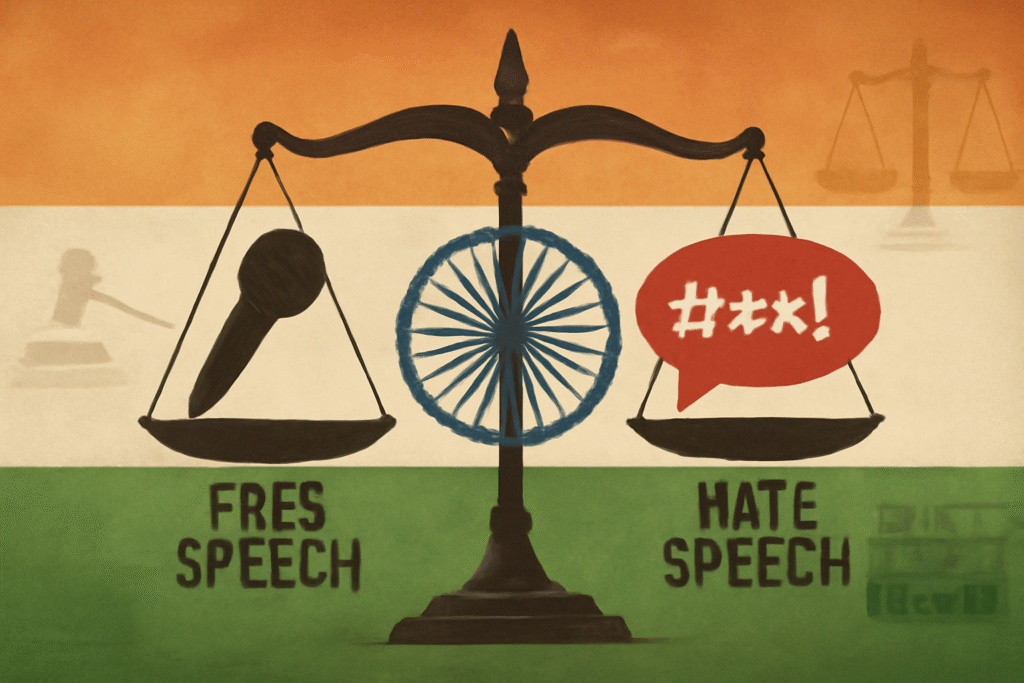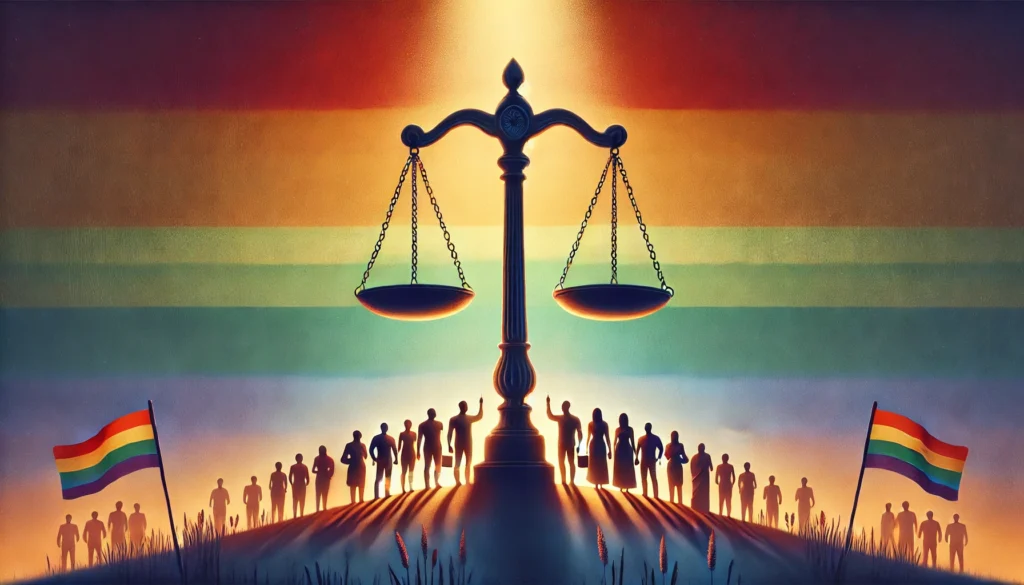Published on: 26th October 2025
Authored by: Akshat Singh
KR MANGALAM UNIVERSITY
Nine-Judge Constitution Bench:
- J. Chelameswar
- S.A. Bobde
- R.K. Agrawal
- R.F. Nariman
- A.M. Sapre
- D.Y. Chandrachud
- S.K. Kaul
- S. Abdul Nazeer
- J.S. Khehar (Chief Justice of India)
Date of Judgment: August 24, 2017
Key Provisions/Statutes:
- Article 14: Right to Equality
- Article 19: Freedom of Speech and Expression
- Article 21: Right to Life and Personal Liberty
- Article 300A: Right to Property
- Aadhaar Scheme (challenged for violating privacy)
- Indian Telegraph Act, 1885
- Information Technology Act, 2000
Brief Facts:
The matter originated when a former judge, Justice K.S. Puttaswamy, filed a writ petition in 2012 challenging the Aadhaar program. He argued that the biometric data collection mandated by Aadhaar violated the individual’s right to privacy. Initially, the Supreme Court referred the case to a five-judge bench. However, due to conflicting prior rulings—such as M.P. Sharma v. Satish Chandra (1954) and Kharak Singh v. State of U.P. (1962), which held that privacy was not a fundamental right—the matter was escalated to a nine-judge Constitution Bench to determine whether the right to privacy is a fundamental right under the Constitution of India.
Issues:
- Whether the Constitution of India guarantees a fundamental right to privacy?
- Whether M.P. Sharma v. Satish Chandra (1954) and Kharak Singh v. State of U.P. (1962) were correctly decided?
- What is the nature, scope, and extent of the right to privacy in Indian constitutional law?
Arguments:
Petitioner’s Arguments:
- The right to privacy is a vital aspect of the fundamental rights enshrined in Part III of the Constitution, particularly in Articles 14, 19, and 21.
- Previous judgments, such as Maneka Gandhi v. Union of India (1978), recognized that liberty includes aspects of personal autonomy and dignity.
- Technological advancements and state surveillance pose significant threats to individual privacy.
- The government’s power to collect and use personal information should be limited by constitutional boundaries and subject to judicial oversight.
Respondent’s (Union of India’s) Arguments:
- The Constitution does not explicitly recognize privacy as an inherent right.
- The concept of privacy is too vague to be clearly defined or protected as a fundamental right.
- Recognizing a fundamental right to privacy might hinder social welfare initiatives and national security measures.
- It is more appropriate for the legislature to formulate privacy legislation than for the judiciary to do so.
Judgment:
In a landmark and unanimous decision, the Supreme Court’s nine-judge bench held that the right to privacy is a fundamental right protected by the Constitution under Part III. This right was deemed intrinsic to the right to life and personal liberty enshrined in Article 21, as well as to the freedoms guaranteed by Articles 14 and 19.
The Court overruled its earlier decisions in M.P. Sharma (1954) and Kharak Singh (1962) to the extent that they diminished or denied the recognition of privacy as a fundamental right.
Justice D.Y. Chandrachud, writing for four judges, emphasized that the Constitution should be viewed as a living document. He stated that privacy lies at the “constitutional core of human dignity.” The judgment underscored that the right to privacy encompasses autonomy over personal decisions, bodily integrity, protection of personal information, and freedom of thought.
The Court clarified that privacy is not an absolute right and may be subject to reasonable restrictions. However, any infringement must satisfy three criteria: legality (there must be a law in place), necessity (a legitimate state interest must exist), and proportionality (the least restrictive means should be employed).
Ratio Decidendi:
- The right to privacy is protected as an intrinsic aspect of the right to life and personal liberty under Article 21 and other fundamental rights.
- Any restrictions on privacy must meet the standards of legality, necessity, and proportionality.
- The previous rulings in P. Sharma and Kharak Singh were incorrectly decided insofar as they failed to recognize privacy as a fundamental right.
Obiter Dicta:
- Justice Kaul emphasized the concept of “informational privacy,” indicating that individuals have the right to control how their personal information is collected, used, and shared.
- The bench noted the importance of establishing a robust data protection framework in light of rapid technological advancements.
- Observations were made regarding privacy in relation to sexuality, bodily autonomy, and the freedom to make personal choices, laying the groundwork for potentially transformative future rulings.
Final Decision:
- The Court unanimously held that privacy is a fundamental right.
- The Aadhaar case was delinked from the principal proceedings and referred to a smaller bench for adjudication on its merits.
- Specific portions of P. Sharma and Kharak Singh were expressly overruled.
- This ruling has significantly influenced subsequent cases concerning data protection, surveillance, sexuality, and reproductive rights.
Conclusion:
The 2017 judgment in Justice K.S. Puttaswamy (Retd.) v. Union of India represents a watershed moment in the affirmation of constitutional rights for the 21st century. By declaring the right to privacy as fundamental, the Supreme Court elevated individual dignity, autonomy, and freedom to the center of constitutional discourse. This ruling not only corrected outdated legal precedents but also established a progressive legal framework aligned with international human rights standards.
It serves as the cornerstone for India’s evolving digital rights jurisprudence and has influenced significant legal developments, including the Aadhaar verdict (2018), the decriminalization of homosexuality (Navtej Singh Johar v. Union of India, 2018), and the Digital Personal Data Protection Act, 2023. This decision remains a pivotal reference for harmonizing technological governance with human rights and continues to shape Indian constitutionalism in the digital age.
Bibliography:
Primary Sources:
- Maneka Gandhi v. Union of India, (1978) 1 SCC 248
- P. Sharma v. Satish Chandra, AIR 1954 SC 300
- Kharak Singh v. State of U.P., AIR 1963 SC 1295
- Rajagopal v. State of Tamil Nadu, (1994) 6 SCC 632
- Justice K.S. Puttaswamy (Retd.) v. Union of India (Aadhaar Judgment), (2018) 10 SCC 1
- Constitution of India, 1950
- The Information Technology Act, 2000
- The Indian Telegraph Act, 1885
- Universal Declaration of Human Rights, 1948
- International Covenant on Civil and Political Rights, 1966
Secondary Sources:
- Gautam Bhatia, The Transformative Constitution: A Radical Biography in Nine Acts (HarperCollins India, 2019)
- Justice D.Y. Chandrachud, ‘A New Rights Jurisprudence for a New Age: Privacy, Dignity and the Indian Constitution’ (2019) 2(1) Indian Law Review 1
- Ananth Padmanabhan, ‘The Privacy Verdict: A Constitutional Moment’ (The Caravan, September 2017)
- Rahul Matthan, The Privacy Paradox: Data Privacy in the Age of Surveillance (HarperBusiness, 2021)
- Shamnad Basheer, ‘Privacy as Autonomy’ (2018) 30(2) National Law School of India Review 1




